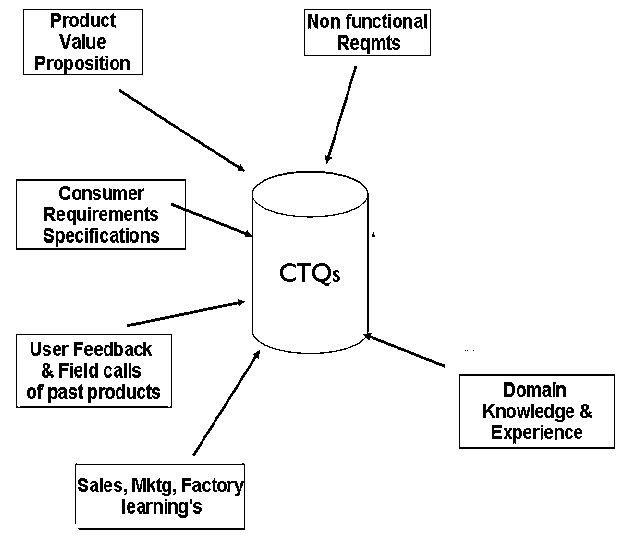Critical To Quality
The CTQs (Critical To Quality):
CTQs are the Critical to Quality parameters as called in the DfSS jargon. Basically CTQs are those parameters that are directly linked to Voice of customer. CTQs are of 3 types:
A. Continuous
B. Discrete
C. Critical factors
Continuous: These are the quantitative ones that can be measured using gauges and instruments.
Discrete: These are the ones that can be classified into Pass/Fail, Yes/No category.
Critical factors: These are CTQs that are either present or absent. For example - Wi-Fi compliance is a critical factor. Either all sets are compliant or not.
The real crux of the DfSS BB/GB project lies in identifying the right CTQs that are mapped to the VOC which are the needs of the customer. Effort available is limited and if spent on unwanted CTQs is actually wasted. So once the VOC was identified through CRS, Value proposition, Risk benefit and Kano, the challenge then was to identify the right software
CTQs for this product XYZ.

1. For each of the continuous and discrete CTQs, the measurement method, target and specification limits must be clearly identified.
2. For the critical factor CTQs, since quantitative measurements or classification is not available, the verification criteria, method and risk should be elaborated instead.
This Identify stage turned out to be one of the most difficult phases when it comes to software development. Everything is digital in software – it works or does not, so all the CTQs we identified from the VOC started becoming “Critical factors”. Identifying test cases as verification criteria was what we did previously also in the software development lifecycle.